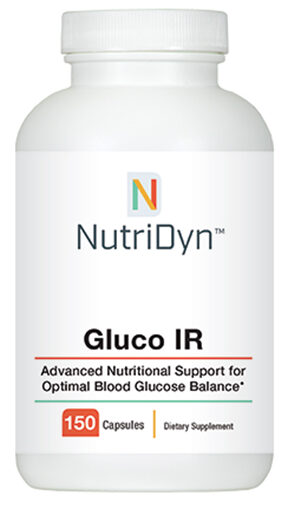Managing Blood Sugar Levels Doesn’t Have to Involve Medication
This Is Part 3 of Our Diabetes Series. Here are Part 1 and Part 2:
Now that we have reviewed some of the clinical aspects of diabetes, let’s dig deeper into Functional Medicine’s approach to treatment.
Blood sugar (also called blood glucose) is the main sugar found in your blood and your body’s primary source of energy. As discussed in Part 2 of our Diabetes Series, controlling the fluctuation of blood sugar by managing energy intake and output is fundamental.
The world of nutraceuticals or supplements offers a variety of choices to help manage blood sugar. An anti-inflammatory diet is also important to help reduce insulin resistance, which is when the cells in muscles, fat, and the liver don’t respond well to insulin and can’t use blood sugar for energy.
Supplements that help support repair and healing are very important. Fiber has multiple benefits by keeping bowel movements regular and through timely removal of toxins. Cinnamon helps regulate blood sugar, and chromium and biotin aid in maintaining normal blood sugar levels.
Then there’s berberine, a particularly relevant compound as it has powerful blood sugar-lowering effects. Found in various plants, such as the Amur cork tree and Goldenseal, and several shrubs, berberine has long been used in traditional Chinese medicine, often found in herbal formulations. It helps maintain blood sugar in normal ranges and has also been shown to help lower blood glucose levels in patients with Type 2 diabetes. Berberine is an insulinotropic agent, meaning it promotes insulin secretion.

As a quick review, food is digested into glucose, which is transported through the blood. The brain senses the glucose level and turns on insulin secretion. Insulin is picked up by insulin receptors in the cell membrane. Activation of these insulin receptors by insulin opens glucose channels in the cell that allow the glucose in it to be utilized. In the presence of too much insulin secretion, prompted by chronic exposure to too much glucose in the blood, insulin resistance develops — the insulin receptors become less responsive to the insulin, resulting in glucose not being appropriately absorbed into the cells from the bloodstream. The body then deposits this excess glucose wherever it can, resulting in advanced glycosylation end products (AGEs). This glucose deposition inactivates the protein they are bound to. Most of us are familiar with the term hemoglobin A1c (HbgA1c) — the hemoglobin that has been glycosylated or damaged by the addition of a glucose molecule. This hemoglobin is inactivated and can no longer carry oxygen through the blood. HbgA1c is a measure of the average blood sugar over the preceding three months. In the Functional Medicine world, it is also a measure of inflammation in the body.
An extensive review published in 2022 in Frontiers in Pharmacology details the mechanism of action of many oral diabetes medications as well as the mechanism of berberine. A key difference between prescription medications for diabetes and the action of berberine is the tendency for prescription medications to cause hypoglycemia (which we have discussed in our Diabetes Series), as prescription medications will continue to drive the production of insulin, or exert their activity, regardless of blood sugar levels. So, in the setting of a normal blood sugar level, these medications will still work to drive the blood sugar lower, often with significant, and possibly even deadly, results.
Berberine, due to its mechanism of action, does not induce insulin production in the setting of normal blood sugar levels, and thus does not lead to hypoglycemia, which is a much safer method of treatment. As mentioned in Part 1 of our series, 4% to 10% of diabetes-related deaths are due to severe hypoglycemia, and one cause of that is oral hypoglycemic agents used to control blood sugar.
The review article in Frontiers of Pharmacology highlights multiple studies that consistently show, even on re-analysis, that berberine — either alone or in combination with other agents such as metformin (a first-line treatment for Type 2 diabetes) — will lower Fasting Plasma Glucose (FPG), HgbA1c and 2-hPBG (plasma blood glucose), another measure of blood sugar levels. Additional studies noted in the research paper indicate berberine can help regenerate islet beta cells and, to a certain extent, restore function of islet beta cells (which produce insulin in the pancreas). Berberine used with glipizide provides better, more stable control of blood sugar than glipizide (another Type 2 diabetes medication) alone.
When it comes to the impact of diabetes on organs, the kidneys are one of the main ones that can be damaged by the condition. Liver function suffers as a consequence of the accumulation of visceral fat — also called toxic fat, it’s hidden inside the body and around the vital organs.
Berberine has no effects on the kidneys or liver, meaning it’s both effective and safe.
Here are some of the other benefits of berberine:
- Helps reduce intestinal absorption of glucose to prevent getting in a hyperglycemic (high blood sugar) state after eating.
- Has certain bactericidal and bacteriostatic effects, so it can help reduce the abdominal pain and diarrhea that can result from changes in carbohydrate absorption.
- Has been shown to enhance insulin sensitivity so it can also play a role in patients who are insulin dependent.
In the next article in this series, we will discuss some of the specific nutraceuticals to help manage glucose levels, whether you’re dealing with pre-metabolic syndrome, diabetes or to just better manage your overall health.

